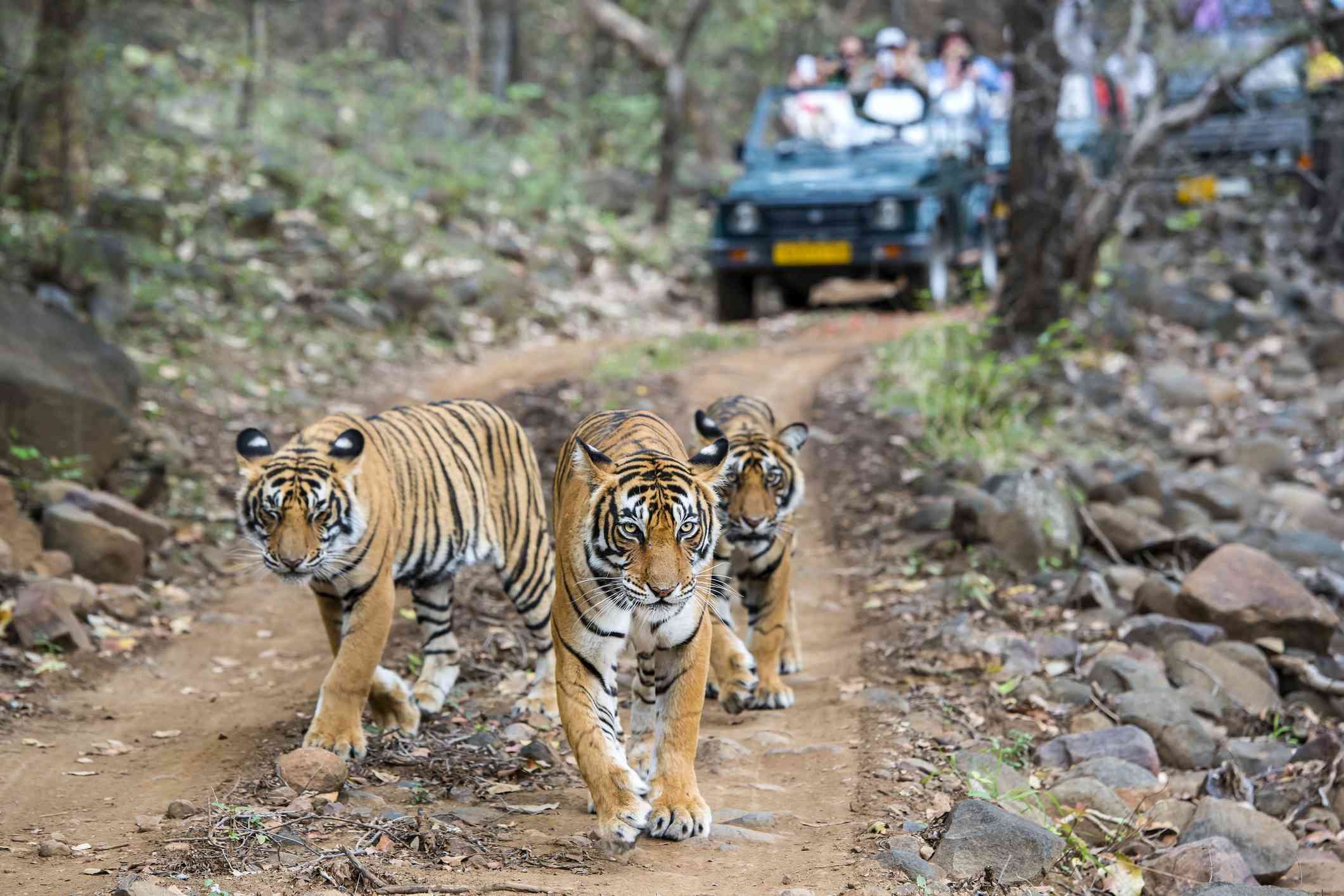
Ranthambore
Tiger spotting, misty roads, or adventure trails around the forest—Ranthambore offers a great suite of holiday adventures. You can explore it on foot or by vehicle, or use its stunning backgrounds to capture beautiful photographs. As a family tourist destination, Ranthambore attracts guests from near and far. The locals are friendly and proud of their town’s popularity, welcoming visitors with their traditional handicrafts and letting them experience the enduring mantra of the land—nature is perfect.
With the highest number of visitors among tiger national parks in India, Ranthambore gets the attention it deserves. Leading hospitality brands, including Taj and Heritage, have their presence marked with luxurious properties. The quality of stay complements the natural beauty found here.
Ranthambore National Park: Located in the Sawai Madhopur region of Rajasthan, the park covers an area of 1334 square kilometers. Bordered by rocky mountains and seasonal fauna, the park comes alive during the monsoons with vibrant greenery and overflowing water bodies. This globally acclaimed park has a good population of tigers, which can be spotted on safaris.
Safari Routes: The park authorities allow safaris only on selected routes. There are eight routes in total, with the first five for conventional travelers. Route 3 is the most scenic, featuring additional lakes and smoother roads. Routes 6–8 do not fall under the core zone and are advised for those with advanced traveling knowledge. Safaris run for limited hours each day, and during peak times, it can be difficult to get your preferred slot.
Ranthambore is well connected by road and train. The nearest airport is in Jaipur, about 180 kilometers from the park. Sawai Madhopur has its own railway station with direct trains from Gujarat, Delhi, and Mumbai.
Best Time to Visit: The ideal time to visit Ranthambore is during October and November when the weather is pleasant. For birdwatchers, December to February is the best period. Tigers and other animals are more active during the summer months of March to May.
Ganesh Temple: Built around 600 BC as a fort with a temple inside, the Ganesh Temple is a historical marvel. Situated on a hill slope, it requires a short 20-minute walk to reach. Regularly visited by locals praying for good health, the temple offers stunning views from the top. Be cautious of monkeys in the vicinity and avoid eating food in the open.
Padam Talab: A great spot for photography, Padam Talab is frequented by deer and other non-harmful animals. Visitors should keep young children away from the water due to occasional crocodile sightings. The area is otherwise safe to visit and falls under Zone 3, the most sought-after safari trail in Ranthambore.
Shri Mahaveerji Temple: This grand Jain temple attracts many believers each year. Families have been visiting it for generations, teaching the values of Jainism to their children. The calm and divine atmosphere offers a rejuvenating experience. For budget travelers, there are inns that allow extended stays. The temple features a large effigy of Lord Mahavira and interesting story depictions.
Khandar Fort: Though in ruins now, Khandar Fort is a remarkable site. Built over 1000 years ago, it requires a 30-minute climb but is worth the effort. Inside the fort are various small temples, each unique. The fort was built by the Chauhan Rajputs before the invasion by Mohammed Ghori and was a favorite hunting ground for the Maharajas of Jaipur.
On your next trip to majestic Rajasthan, don’t forget to add Ranthambore to your itinerary. It might not look too ravishing from the outside, but once you visit, it will captivate you with its exquisite beauty. To know more about visiting Ranthambore, Click Here And Let Us Plan Your Vacation
